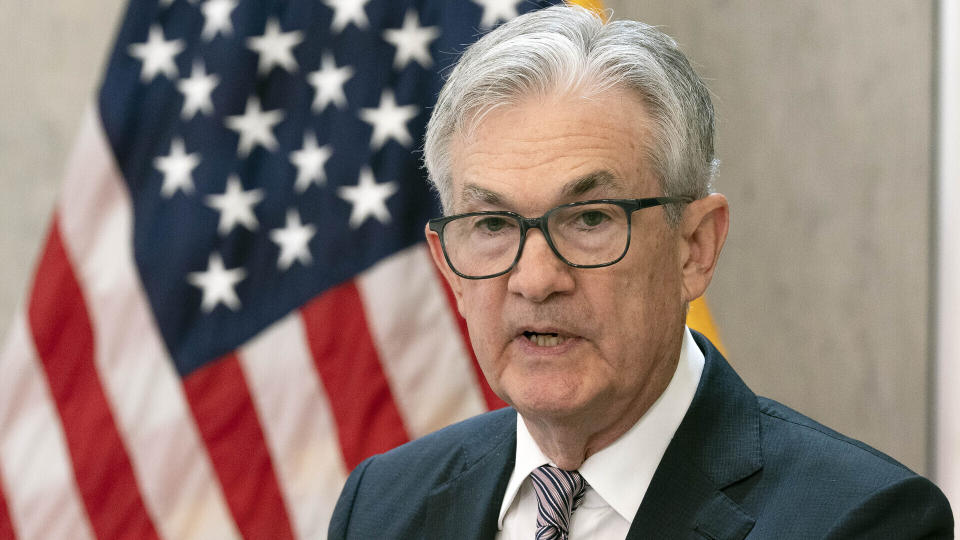Powell Says Fed is Committed to Bringing Down Inflation – Experts Say Recession May Be the Best Option

Just one week after the Federal Reserve raised interest rates by three-quarters of a percentage point, Chair Jerome Powell said that the Fed was strongly committed to bringing inflation down and anticipated that “ongoing rate increases will be appropriate.”
See: Fed Raises Rates 75 Basis Points Amid Bear Market & Record-High Inflation
Find: May Inflation Reaches Highest Level Since 1981, Touches Every Sector of the Economy
Testifying before the Senate Banking Committee, Powell said “at the Fed, we understand the hardship high inflation is causing. We are strongly committed to bringing inflation back down, and we are moving expeditiously to do so. We have both the tools we need and the resolve it will take to restore price stability on behalf of American families and businesses. It is essential that we bring inflation down if we are to have a sustained period of strong labor market conditions that benefit all,” according to prepared remarks.
On June 15, as expected, the Federal Reserve said it would raise interest rates by three-quarters of a percentage point rate, the first time it has done so since 1994. The move was widely anticipated and comes amid a market that has entered bear territory and inflation at 8.6% — a 41-year high.
In his remarks on June 22, Powell said that against the backdrop of the rapidly evolving economic environment, the Fed’s policy has been adapting, and will continue to do so.
“Over coming months, we will be looking for compelling evidence that inflation is moving down, consistent with inflation returning to 2%,” he said in his remarks. “We anticipate that ongoing rate increases will be appropriate; the pace of those changes will continue to depend on the incoming data and the evolving outlook for the economy. We will make our decisions meeting by meeting, and we will continue to communicate our thinking as clearly as possible. Our overarching focus is using our tools to bring inflation back down to our 2% goal and to keep longer-term inflation expectations well anchored.”
Rusty Vanneman, chief investment strategist at Orion Advisor Solutions, told GOBankingRates that given the inflationary backdrop, it was reassuring to hear Powell use phrases such as the Fed is “strongly committed” to bringing down inflation and will likely keep raising rates until there is “compelling evidence” that inflation is falling back toward their preferred 2% levels.
“The Fed has multiple tools to fight inflation. First, they have their words and their guidance. Check. The language seems appropriate to fight inflation. Second, they can raise rates. Check again,” Vanneman said. “They just had their largest single increase in the Fed Funds rate since 1994 and they are currently projecting to move the policy rate by more than 250 basis points this year, which would be the biggest calendar-year increase in short-term rates in 42 years (when the yield went from 14.0% to 18.0%).”
“Next, and some would say is the most important tool, is actually controlling money supply growth. On that point, we will find out more on June 28th, when the Fed next reports money supply numbers for May,” he concluded.
Louis Ricci, Head Trader at Emles Advisors told GOBankingRates that there is some debate about which signals Powell is looking at.
“Powell has stressed that he thinks tighter monetary policy will be an effective tool against inflation and has said he thinks the economy is well-positioned to handle higher rates. However, he also told Warren that higher rates won’t do much to lower soaring food and gasoline costs,” Ricci said. “He noted that the war in Ukraine and Covid-linked shutdowns in China are adding to inflation pressures, and added that the problem is not unique to the U.S. but is affecting many global economies.”
Consumer Price Index: How Much Did Inflation Increase the Price of Bacon, Bread & Eggs in May?
Find: Once the Economy Enters a Bear Market, How Long Does It Take for Stocks To Hit Their Lowest Point?
According to Ricci, the biggest question is if they are willing to risk a recession.
“The most hawkish traders are saying we need a recession in order to get demand for crude etc. down – and if the Fed is intent on targeting headline inflation, this may be their only option. However, if Powell really wants to avoid a recession, and focuses on core CPI and what is directly under his control, markets may see relief sooner than expected,” he explained.
More From GOBankingRates
This article originally appeared on GOBankingRates.com: Powell Says Fed is Committed to Bringing Down Inflation – Experts Say Recession May Be the Best Option

 Yahoo Finance
Yahoo Finance 